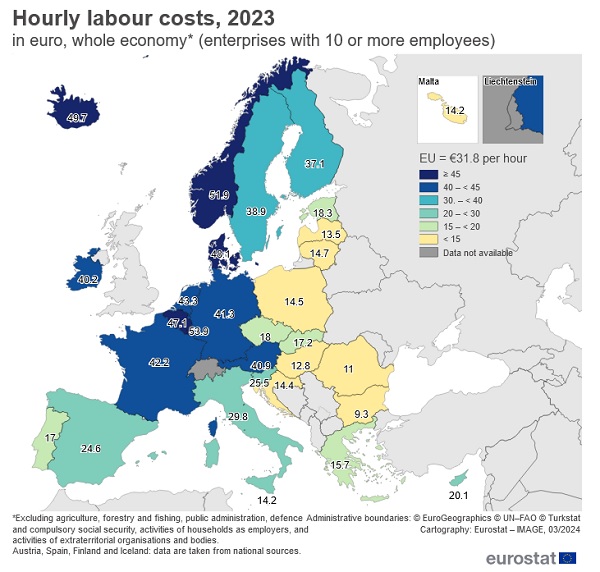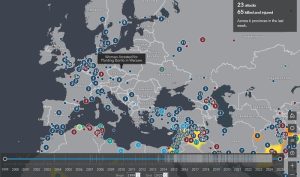In 2023, the average hourly labour costs in the whole economy were estimated to be €31.8 in the EU and €35.6 in the euro area, up compared with €30.2 and €34.0, respectively, in 2022.
Lowest hourly labour costs in Bulgaria, highest in Luxembourg
The average hourly labour costs mask significant gaps between EU countries, with the lowest hourly labour costs recorded in Bulgaria (€9.3), Romania (€11.0) and Hungary (€12.8) while the highest in Luxembourg (€53.9), Denmark (€48.1) and Belgium (€47.1).
Hourly labour costs in industry were €32.2 in the EU and €38.0 in the euro area. In construction, they were €28.5 and €31.9, respectively. In services, hourly labour costs varied between €31.8 in the EU and €34.8 in the euro area. In the mainly non-business economy (excluding public administration), they were €32.4 and €35.7, respectively.
The two main components of labour costs are wages and salaries and non-wage costs (e.g. employers’ social contributions). The share of non-wage costs in total labour costs for the whole economy was 24.7% in the EU and 25.5% in the euro area. The lowest shares of non-wage costs were recorded in Malta (1.4%), Romania (5.0%) and Lithuania (5.4%) and the highest in Sweden (32.2%) and France (31.9%).
Hourly labour costs increased by 5.3% in the EU between 2022 and 2023
In 2023 compared with 2022, hourly labour costs at whole economy level expressed in € rose by 5.3% in the EU and by 4.8% in the euro area.
Within the euro area, hourly labour costs increased in all countries. The largest increases were recorded in Croatia (+14.2%), Lithuania (+12.4%) and Estonia (+11.7%).
For EU countries outside the euro area, the hourly labour costs expressed in national currency increased in 2023 in all countries, with the largest increases recorded in Hungary (+17.0%), Romania (+16.5%), Bulgaria (+14.0%) and Poland (+12.4%). They increased the least in Denmark (+2.7%).
Source: Eurostat


